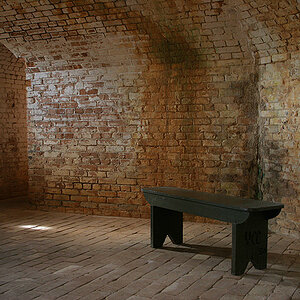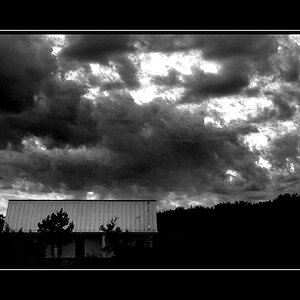Garbz
No longer a newbie, moving up!
- Joined
- Oct 26, 2003
- Messages
- 9,713
- Reaction score
- 203
- Location
- Brisbane, Australia
- Website
- www.auer.garbz.com
- Can others edit my Photos
- Photos NOT OK to edit
Ok i'm not sure if this technically classes as alternative techniques but i guess i'll find out soon 
Last week I started with Infra red, this week it's Black and White, and i'm loving it all! The film i'm using atm is Kodak B&W 400, which is the most commonly available C-41 process film here. However a friend recomended a few others amongst them were:
Kodak Portra 400BW
Kodak T400CN
and Ilford XP2
It was interesting to hear that the Ilford and the T400CN is "unrated". Apparently it gives good results from ISO50 right up to ISO1600. And this simply doesn't make sense to me. Does this type of thing only apply in the Darkroom? I.e. If I were to develop these myself I could take a shot at ISO50 and ISO1600 and still get perfect shots?
To me this makes no sense if sending things off to a lab where the film is thrown into a machine and it does the work? So here's my theory and can someone please tell me if this is right:
1. Lower ISO = finer grain, Higher ISO = larger grain.
2. Photos will need to be sent off to a pro photo lab and the lab will need to be informed at what ISO it was exposed at.
3. The single film will all need to be shot at the same ISO to get consistent results.
So have I hit the nail or am I so far out of the ballpark i'm playing a completely differnt sport?
Last week I started with Infra red, this week it's Black and White, and i'm loving it all! The film i'm using atm is Kodak B&W 400, which is the most commonly available C-41 process film here. However a friend recomended a few others amongst them were:
Kodak Portra 400BW
Kodak T400CN
and Ilford XP2
It was interesting to hear that the Ilford and the T400CN is "unrated". Apparently it gives good results from ISO50 right up to ISO1600. And this simply doesn't make sense to me. Does this type of thing only apply in the Darkroom? I.e. If I were to develop these myself I could take a shot at ISO50 and ISO1600 and still get perfect shots?
To me this makes no sense if sending things off to a lab where the film is thrown into a machine and it does the work? So here's my theory and can someone please tell me if this is right:
1. Lower ISO = finer grain, Higher ISO = larger grain.
2. Photos will need to be sent off to a pro photo lab and the lab will need to be informed at what ISO it was exposed at.
3. The single film will all need to be shot at the same ISO to get consistent results.
So have I hit the nail or am I so far out of the ballpark i'm playing a completely differnt sport?












